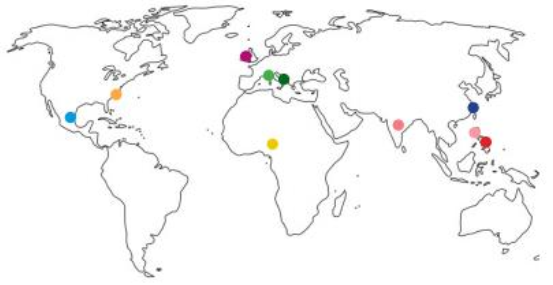Wild animals are all over campus! Not meaning the ones that come out at night, but the ones that decorate the outside walls of some buildings around campus.
These little creatures are just one of many art projects Associate Professor of Art John Rudel had his winter session class create. This past break, Rudel experimented with the idea of public art, otherwise known as graffiti, in his trial class Public Art. Most of the inspiration for the art made in this class was the illegal artwork of a masked graffiti artist only known by his pseudonym, “Banksy.”
“It was one of my favorite classes,” stated sophomore Michael Moran, a lacrosse player and art minor.
“The class was really cool and interesting,” agreed sophomore Candace Carey.
Moran along with sophomore Melanie Maglieri, Carey and others participated in these graffiti-like artworks. They worked a lot with spray paint and stencils but also used miscellaneous tools to create their unique, urbanized pieces.
With tools that were gathered, the class created many interesting, unique and beautiful works of art. Some of which are around campus but many of them you would have to take a trip to the Fine Arts building to witness.
One of these pieces is a water pond spray painted onto a slate of wood that is placed on the ceiling before you enter the fine arts building. Another art piece was made of a rainbow of crayons connected to one end of a wooden board and then exposed to a lamp that melted the colors in a dripping fashion.
Vice President for Student Affairs David Buckingham was “totally supportive” in what this class was trying to do. In fact, what started this ball rolling was aw project in Los Angeles that he heard about. It consisted of placing artwork in the hallways of a hospital to create a better mood.
“I’m a real patron of the arts,” exclaimed Buckingham.
Which is why many of the hallways in Bray Village is now littered with student artwork painted directly onto the walls. These public displays of art started the idea for the winter session class.
Students, including freshman Nuvia De La O, followed suit when creating their final project for the class by attaching creatures, which resembled the animals that live around campus, to the bottom of numerous buildings on campus. They did this by combining 100% whole wheat, flour and water to make wheat paste to glue the printed out images of the animals to the building. Though it is not completely permanent, weather will eventually remove it, it was made to last for a while.
“It’s addicting to put your artwork in public places,” declared Moran.
So if you want to experience the phenomena of public art, just take a stroll over to residential villages or the Fine Arts building and see how many animals you can discover.


